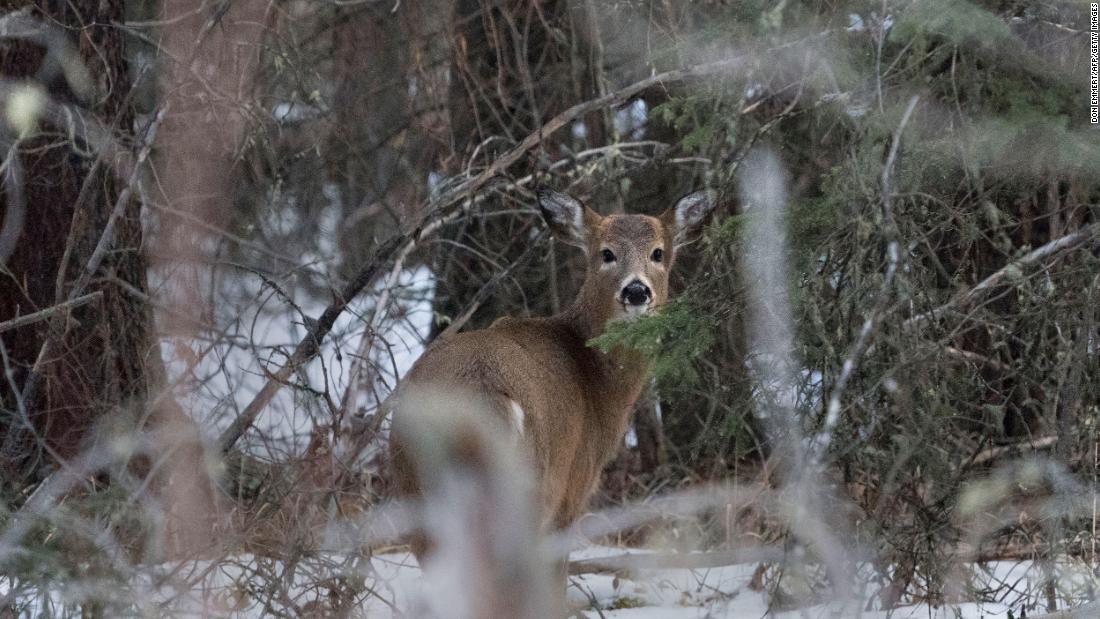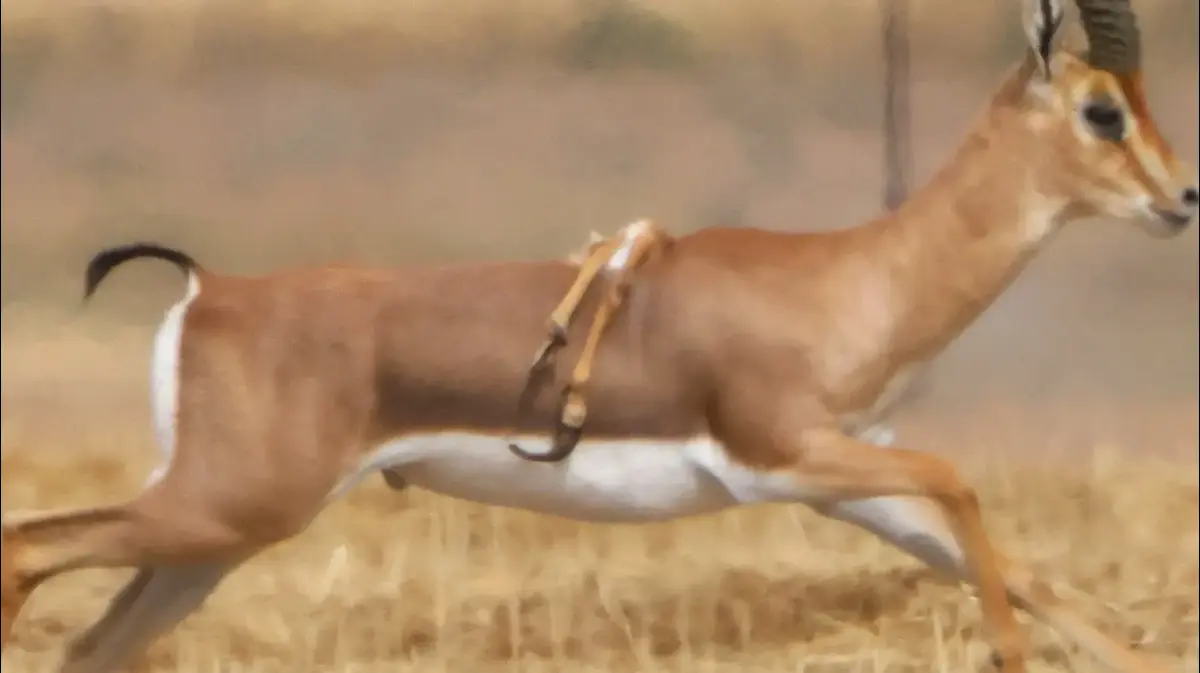What distinguishes the covid-19 BA.2 subvariant from the omicron?
0:54
(CNN) --
A variant of the coronavirus that causes COVID-19 -- similar to the omicron variant, which appears to be very different from circulating strains and stands out on a long branch of the virus family tree -- was discovered in a population of white-tailed deer in Ontario, Canada, according to a new study.
The same strain was also found in a person in the same area who had been in contact with deer, but there is no evidence of ongoing transmission from deer to humans, and it is unlikely to pose an immediate threat to humans.
Researchers who first characterized what they call the 'Ontario WTD clade' (WTD
)
say it is difficult to determine how this variant evolved, as it appears to have gone unnoticed and not having been sampled in the context of the pandemic for almost a year.
They speculate that it went from humans to deer and then back to at least one human.
The new branch of the SARS-CoV-2 family tree presents some 79 genetic changes that differentiate it from the original strain of the virus that was first identified in Wuhan (China).
About half of those changes - 37 - have been observed in animals, but 23 of them have never before been identified in deer.
"I think it's a pretty significant study, because we're looking at the potential evolution of the virus in an animal reservoir," says J. Scott Weese, a professor at the University of Guelph (Canada) specializing in the study of infections that jump between animals. and the people.
advertising
What is parosmia and why it cannot be rehabilitated in the context of the coronavirus pandemic
Weese says that before we could see the SARS-CoV-2 virus pass between people and animals, but then stop.
There was no indication that it persisted and changed in an animal population after these contagion or receding events.
However, its closest viral relatives date back 10 to 12 months to humans and mink in Michigan, just across the border from Ontario.
"It went somewhere and changed over the course of months to a year, and it seems like it was most likely inside an animal. We just don't know what species or where," says Weese, who reviewed the study but did not participated in the investigation.
The study was published prior to peer review on the BioRxiv preprint server.
Signs of a new animal reservoir
In many ways, deer are the ideal hosts for the SARS-CoV-2 coronavirus, Weese says.
They are very susceptible to infection, but do not get very sick, and they nest in groups, which facilitates the spread of the virus.
This new strain was detected during the hunting season.
The hunters took the deer they killed to the scientists, who took samples and analyzed them.
The researchers say there is no evidence that this strain has led to consistent deer-to-human or human-to-human transmission.
However, the hunting season ended in the region and the omicron wave spread, complicating surveillance.
Early laboratory experiments suggest that the new strain is easily killed by antibodies created by vaccination, making it unlikely that this version of the virus will pose an immediate threat.
The problem is what can happen in the future.
"I think most people thought -- and it's true -- that humans are driving the pandemic," said study author Bradley Pickering, who is chief of special pathogens at Canada's National Center for Foreign Animal Diseases.
"So now it looks like this is circulating in the wild."
If it stays in the deer of North America, it could continue to circulate and change.
“There is a risk that it will always be there and that it could, at any moment, affect people again,” he said.
Wastewater from Rome would help prevent future pandemics.
This is the reason
Pickering says that the researchers will try to restart their surveillance of the deer population to continue monitoring the evolution of the virus.
If deer have become a true reservoir animal, it's a difficult problem to solve, and it signals a new phase in the pandemic, Weese says.
"We have to go beyond a human-centric approach. Individual means individual; it doesn't mean people," Weese said.
"It doesn't matter if it's circulating in 100 million people in a fully vaccinated area of the world or if it's circulating in 10 million deer in North America. It's circulating, and because the virus circulates and replicates, that's how mutations occur." .
Another way to survive the coronavirus
Are we facing the end of the covid-19 pandemic?
5:38
When SARS-CoV-2 shows up in a population of farm animals, such as mink, or hamsters sold in pet stores in Hong Kong, they are often euthanized to contain the spread of the virus.
That is not possible when the virus is in a population of wild animals.
There are vaccines for animals, but veterinarians use them for the same reason they use them for humans, to prevent disease and prevent the animal - a tiger in a zoo, for example - from becoming seriously ill or dying.
"Vaccines are not very effective at preventing transmission," says Weese.
"We would have to have an animal vaccine that is better than a human vaccine, and animal vaccines are older technology, so that would be a very high bar to set."
coronavirusCovid-19Deer









